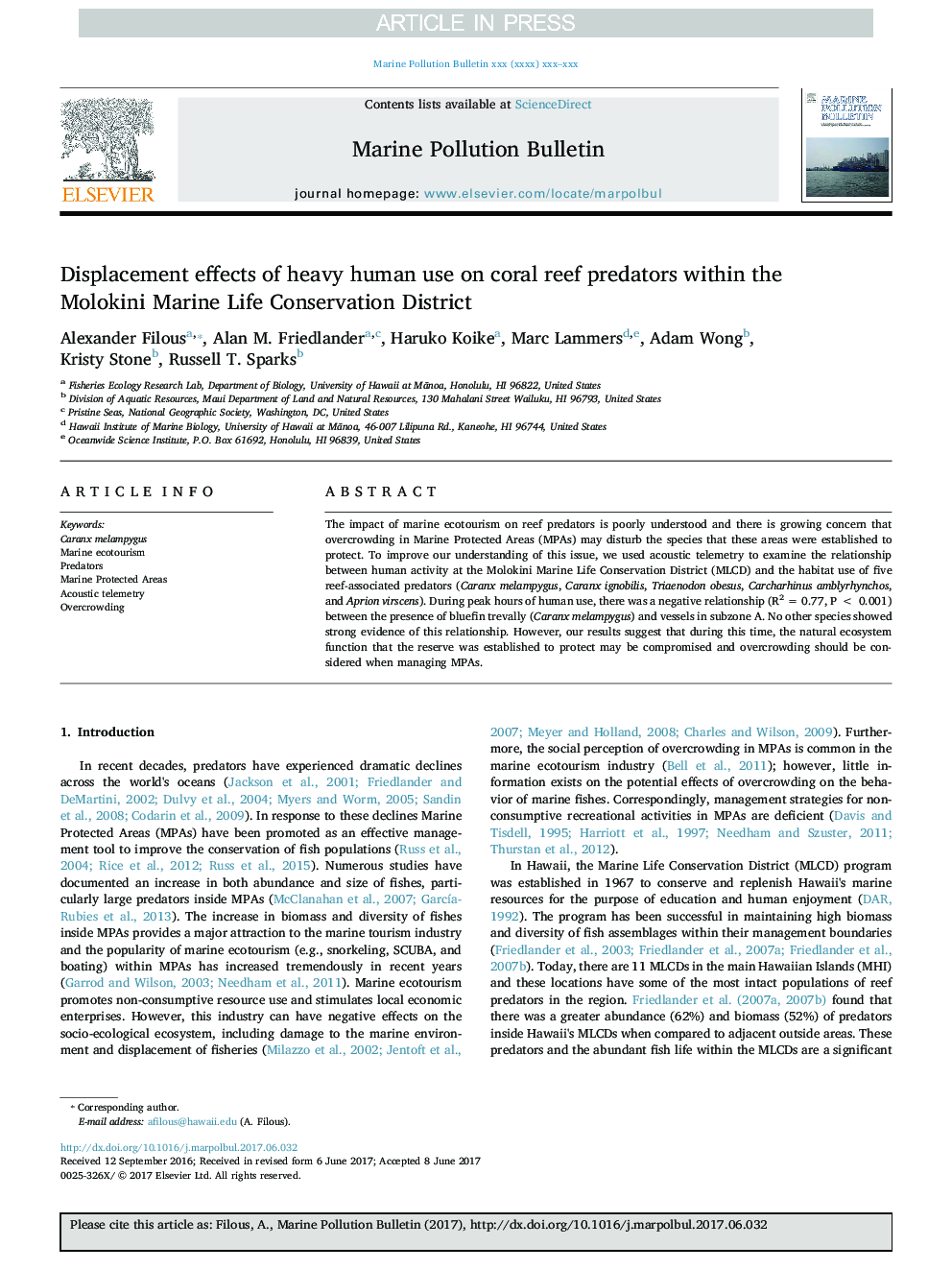| Article ID | Journal | Published Year | Pages | File Type |
|---|---|---|---|---|
| 5757319 | Marine Pollution Bulletin | 2017 | 8 Pages |
Abstract
The impact of marine ecotourism on reef predators is poorly understood and there is growing concern that overcrowding in Marine Protected Areas (MPAs) may disturb the species that these areas were established to protect. To improve our understanding of this issue, we used acoustic telemetry to examine the relationship between human activity at the Molokini Marine Life Conservation District (MLCD) and the habitat use of five reef-associated predators (Caranx melampygus, Caranx ignobilis, Triaenodon obesus, Carcharhinus amblyrhynchos, and Aprion virscens). During peak hours of human use, there was a negative relationship (R2Â =Â 0.77, PÂ <Â 0.001) between the presence of bluefin trevally (Caranx melampygus) and vessels in subzone A. No other species showed strong evidence of this relationship. However, our results suggest that during this time, the natural ecosystem function that the reserve was established to protect may be compromised and overcrowding should be considered when managing MPAs.
Related Topics
Physical Sciences and Engineering
Earth and Planetary Sciences
Oceanography
Authors
Alexander Filous, Alan M. Friedlander, Haruko Koike, Marc Lammers, Adam Wong, Kristy Stone, Russell T. Sparks,
